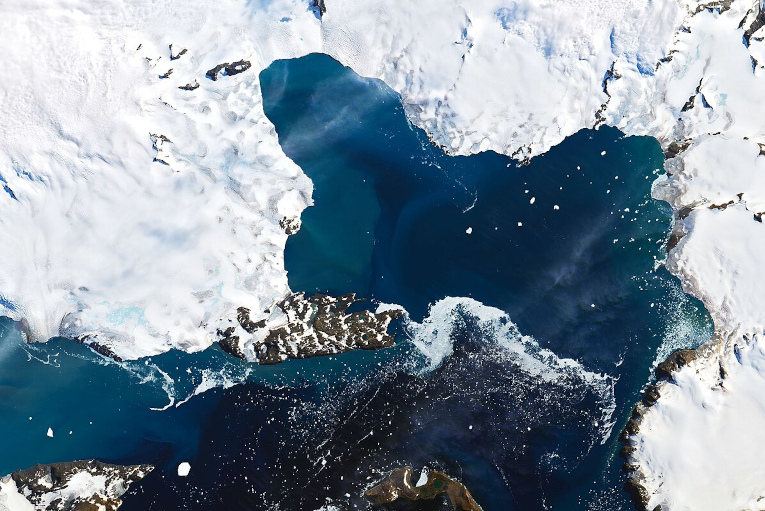A new scientific study sent a quiet but serious signal through the climate science community last week: researchers have detected a shift in the Southern Ocean’s circulation patterns. While the mainstream media barely registered the news, this finding could have significant implications for global climate dynamics and the resilience of Earth’s systems. The study, powered by satellite innovations, challenges longstanding climate model predictions and offers a fresh lens into one of the most remote yet critical regions on the planet.
Why does this matter? The ocean plays a key role in regulating global climate by distributing heat and storing carbon. Any change in the way its currents move or how its waters mix can ripple out to affect weather patterns, ice melt, and greenhouse gas release. In this post, we’ll unpack what this shift means, explore the risks, look at how ocean currents shape global climate, and highlight why ecosystem resilience may be our best ally in an era of accelerating change.
The risks of shifting waters
The core finding of the study is the detection of increased salinity at the surface of the Southern Ocean. This contradicts previous expectations that melting ice would make surface waters fresher. Saltier water is denser, and this density shift allows deep, warmer water to rise toward the surface — a process known as upwelling. That upwelling can, in turn, accelerate the melting of sea ice, releasing stored heat and CO2 (both dissolved in deeper waters and locked in the continental ice) into the atmosphere, which may intensify global warming.
These changes don’t operate in isolation. The Southern Ocean plays a crucial role in absorbing excess heat and carbon from the atmosphere. A disruption in its circulation could weaken this function, creating a feedback loop where warming leads to more warming. If these upwelling events become more frequent, they could destabilize not just regional systems but also larger-scale patterns like rainfall distribution and storm intensity across the Southern Hemisphere, and eventually, the rest of the planet.
The large-scale nature of climate
Earth’s climate is a vast, interconnected system shaped by interactions between the atmosphere, oceans, land, ice, and ecosystems. Solar radiation is distributed unevenly across the planet, warming the equator more than the poles. This temperature imbalance sets air and water in motion, creating the engine behind weather and climate. The ocean and atmosphere are tightly coupled: winds drive surface currents, while the ocean stores and redistributes heat, shaping pressure systems and wind patterns in return.
One of the most critical components of this system is the global ocean circulation, often called the Ocean Conveyor Belt<. Near the equator, warm, less dense water rises and fuels the atmosphere with moisture. At the poles, colder, denser water sinks, making space for warm water to flow in. This movement creates a planetary-scale conveyor that transports heat, nutrients, and carbon around the world. A shift in any part of this system, such as shifts in the Antarctic Ocean, could have far-reaching consequences for global climate stability.
The overturning circulation of the global ocean. Throughout the Atlantic Ocean, the circulation carries warm waters (red arrows) northward near the surface and cold deep waters (blue arrows) southward. Image credit: NASA, via Wikimedia Commons https://commons.wikimedia.org/wiki/File:Overturning_circulation_of_the_global_ocean.jpg. File is in the Public Domain.
Reading the signs
Although the detection of increased salinity and upwelling in the Southern Ocean is concerning, it doesn’t yet signal a full-scale breakdown of global circulation. Climate and ocean systems operate on seasonal, decadal, and even multidecadal cycles. The observed changes may be part of natural variability rather than a permanent shift. What matters now is monitoring how often these events occur, and whether their frequency is increasing compared to the past.
This is where ecosystem resilience becomes essential. Healthy marine ecosystems can absorb some of the shocks from climate variability, helping to stabilize key processes even as conditions shift. But their ability to do so depends on the pressures we place on them. As warming accelerates and ocean circulation patterns change, safeguarding ecosystem resilience becomes a critical line of defense. Investing in science, policy, and conservation isn’t just prudent, it’s urgent. For now, the study serves as a powerful reminder: the Earth is speaking. It’s up to us to listen and respond.
Teaser image credit: Antarctica Melts Under Its Hottest Days on Record. Credit NASA, Public Domain.
